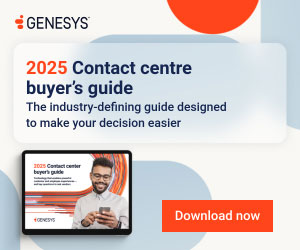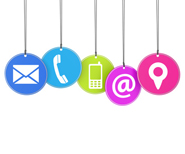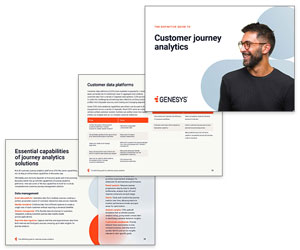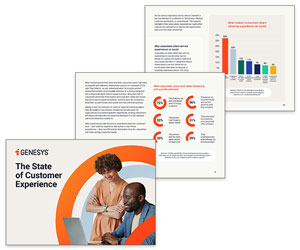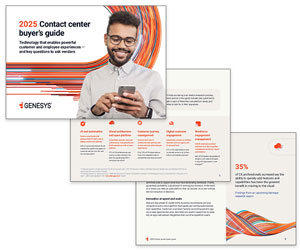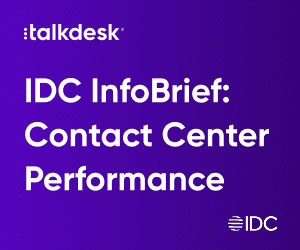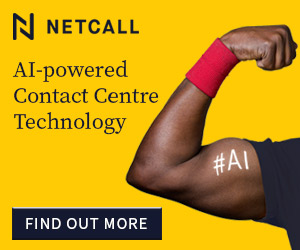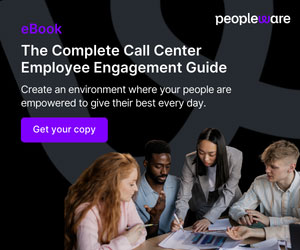Steve Feeney argues that retailers are not delivering an integrated approach to multichannel customer service.
There is an expectation from today’s customers that they should be able to shop with a chosen company through any channel – whether that be picking up a mobile, going online to use social media or purchasing in store through click and collect. Whilst customers are now connecting with retailers via a range of different channels, more often than not customer service is still not being offered as a consolidated service over all of those channels.
The mobile phone is the first thing many customers reach for
The mobile phone is the first thing many customers reach for when they want to interact with your company. As a result, mobile apps serve as an increasingly important customer service touch point. They empower customers with convenient, on-the-go self-service features.
Mobile apps are changing and shaping the overall customer experience, delivering dynamic ways to interact with customers. Engaging customer-centric mobile apps can strengthen the customer’s relationship with the brand. But typically, these apps only offer a one-way transactional function, where they enable users to browse items, check a balance or purchase an item. They offer little in the way of real customer engagement.
This is especially frustrating for mobile-using customers, who often find that there is no immediate way to contact a customer service agent when they need live assistance. Instead, they have to exit the mobile app and find the correct contact centre number to call for their query. As a result, customers are forced to wait on hold, re-authenticate themselves, navigate through complex phone menus once more, and repeat the nature of their call when they are eventually connected to the correct person.
Extending this “Connect Me” functionality to the app will allow customers to connect with an agent via voice, email or webchat and the interaction is delivered to the agent seamlessly, along with its context. This ensures that the agent has full visibility of what the customer was doing in the app and is able to assist immediately without having to request information from the customer. This not only increases agent efficiency and call handle time but greatly enhances the customer experience.
Effective mobile customer care requires seamless transition
Effective mobile customer care requires a seamless transition between self-service applications and live assistance. Companies need to raise the bar on personalisation and deliver a customer experience that is increasingly determined by the customer, giving them the best possible experience and offering them a range of channels through which to address and resolve their queries.
Transforming today’s transactional apps into conversational mobile apps enables a new level of connection between the brand and the consumer by enabling customers to stay within the mobile app whilst receiving live assistance, rather than having to visit a separate website to find the correct customer service number. Through this, businesses can deliver a convenient, fast, simple service and a highly personalised customer experience.
Social media offers a great opportunity for brands to be proactive
Social media is often used in marketing, yet not so much for customer service. The use of social media for customer service is still relatively new, but it offers a great opportunity for brands to be proactive in dealing with customer complaints, and it can also show potential customers that a brand is listening and willing to engage with its customers.
Some companies have made the effort with social media and launched dedicated customer service accounts, which provide information and, more importantly, refer customers to the best and correct place to get their queries dealt with.

Steve Feeney
By bringing their customer service environments together with Facebook and Twitter, retailers can give customers an easy to way to contact them. Most customers don’t carry phone numbers for the companies they do business with, and they’re not likely to seek out those numbers when away from their computers. Through social networks, however, consumers can connect directly to a company’s Facebook page or Twitter feed from anywhere. By engaging customers where it’s most convenient for them, their experience is improved, and retailers that ignore the opportunity to connect with customers so effortlessly will miss out on valuable customer engagement opportunities.
Here is another disconnect – by ignoring the impact of social media as a communication channel retailers could lose an opportunity to increase customer satisfaction and loyalty and meet a lot of customers where they spend a lot of their time.
Customers expect companies to be available at all hours – especially on social media – and real-time routing could provide a social media customer service solution that automates the processes of listening to what people are saying, analysing posts, and prioritising and routing them to the right agents. The organisation can then respond in the right way to strengthen the customer relationship and brand.
Retailers need to look at how they can integrate social media into their broader customer service offering to ensure that customers who interact through social media will experience the same level of service and support which customers using traditional channels enjoy. They should also consider the positive impact on the customer experience which would be delivered by agents having complete visibility of their customers’ interactions on one desktop view, regardless of channel.
Click&Collect saves the customer both time and money
Click&Collect is starting to play a huge role in modernising high-street shopping. Retailers are constantly looking for new ways to ensure customer satisfaction. Luckily for online shoppers, ‘click and collect’ services are becoming increasingly popular and available.
Click&Collect has evolved from customer frustration in online shopping. Rather than having to wait at home for your purchases to be delivered, or spend time going from store to store to find them, customers can now order their purchases online on their device then go to a store of their choice at a convenient time and collect their purchases.
Click&Collect saves the customer both time and money – often click-and-collect services are free – and, better still, customers can change dates and times accordingly by clicking through to the company’s mobile app and changing to a date that’s more convenient.
However, there can be a big disconnect from a customer point of view. If the collection process is not smooth – wrong item, wrong place, wrong time, wrong charge – and if this new ‘added’ convenient consumer channel is not integrated fully into customer service, then the value from offering a Click&Collect service is lost.
Click&Collect can be a driver of sales and customer satisfaction, but it is just one of many channels the customer may be using, and unless it is completely integrated with the customer service operation, it can do just the reverse.
Customers make no distinction between the high street and contact centre
Customer service is a huge element of retail success. A brand may be hundreds of shops with thousands of employees that sells both online and offline, but the customer sees just one company. Customers make no distinction between the online part of your business, the high street and the contact centre.
We are witnessing the rise of a generation of customers using multiple contact channels in the palm of their hand, and retailers must keep up with this and be able to deliver the same consistent customer experience across all channels.
Retailers that deliver a good, personalised, and consistent experience, regardless of the customer’s chosen channel, will go a long way in retaining their customers.
With thanks to Steve Feeney, Account Director at GenesysLabs
Author: Megan Jones
Published On: 23rd Oct 2013 - Last modified: 12th Dec 2018
Read more about - Archived Content, Genesys
